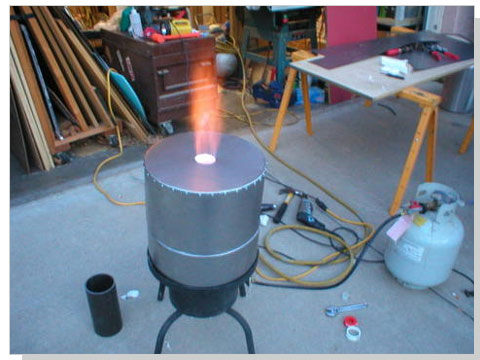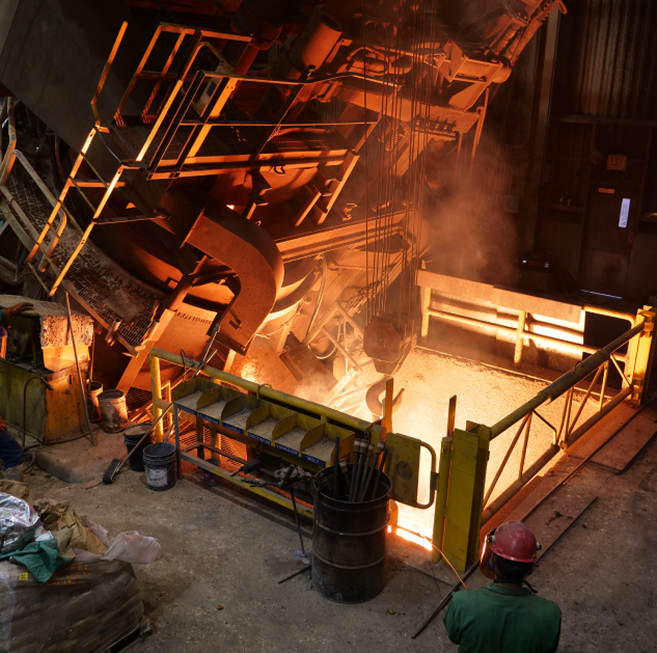How robotics and digital tools are redefining the Aluminum Foundry process
Wiki Article
Discover the Innovative Techniques Made Use Of in a Metal Foundry for Superior Casting Outcomes
In today's affordable production landscape, metal foundries are significantly taking on innovative techniques to enhance spreading results - Metal Casting. Advanced computer system simulations enable for precise modeling of liquified metal actions, while 3D printing allows quick manufacturing of complicated molds. Furthermore, environment-friendly materials and automation enhance operations. These growths assure significant improvements in efficiency and quality assurance. Nevertheless, the effect of these technologies on sustainability and manufacturing methods remains to be totally checked outAdvanced Computer System Simulations in Metal Casting
Advanced computer simulations have revolutionized the metal spreading process by boosting precision and efficiency. These advanced devices permit designers to develop online designs of cast parts, enabling them to analyze and anticipate the behavior of liquified metal throughout the spreading stage. By imitating different parameters such as temperature level, flow rate, and cooling prices, producers can identify potential flaws before physical production begins.This aggressive method reduces waste and reduces costly mistakes, eventually causing boosted product top quality. Additionally, simulations assist in the optimization of mold layouts, making certain that they meet the certain needs of each task. The integration of computational fluid characteristics (CFD) and limited component analysis (FEA) more adds to the accuracy of these simulations, giving insights that were previously unattainable. As an outcome, advanced computer system simulations have ended up being a vital element of modern-day metal foundries, greatly progressing the sector's capabilities.
3D Printing for Mold And Mildews and Patterns
3D printing has actually emerged as a groundbreaking strategy for producing mold and mildews and patterns in the metal foundry market. This innovation allows the fast manufacturing of complex geometries that standard production techniques battle to attain. By using additive production, foundries can develop detailed designs with lowered lead times and product waste. The ability to generate molds as needed enables for better flexibility in design versions, promoting faster prototyping and adjustments.3D printing can make use of a selection of products, consisting of plastics and metals, tailored to particular casting demands. This versatility boosts the precision of mold and mildews, causing exceptional casting end results with enhanced surface finishes. Additionally, the reduction in the variety of components called for streamlines setting up procedures, additionally enhancing production performance. As foundries proceed to adopt 3D printing, they are poised to redefine sector requirements, leading the way for development and improved performance in metal casting procedures.
Eco-Friendly Products and Processes
As the metal foundry market deals with boosting pressure to decrease its environmental footprint, the fostering of eco-friendly products and processes has actually come to be necessary. Foundries are currently exploring sustainable alternatives to traditional products, such as making use of bio-based binders and recycled metals. These materials not only minimize waste but also reduced energy consumption during manufacturing.In addition, improvements in sand casting techniques have led to using artificial sands that are less damaging to the atmosphere. Shops are additionally implementing ingenious procedures like molten metal therapy that decreases discharges and boosts the top quality of cast products.
Additionally, water-based coverings have changed hazardous solvents, promoting a safer work environment (Aluminum Casting). By incorporating these green techniques, metal foundries can considerably this website reduce their ecological influence while maintaining top notch spreading outcomes. This change not only profits the atmosphere however also aligns with the expanding consumer demand for sustainable production remedies
Automation and Robotics in Foundry Operations
While the metal foundry market welcomes innovation, the integration of automation and robotics is changing operations substantially. Automated systems streamline processes such as mold making, metal putting, and casting finishing, considerably improving performance. Robotics promote the handling of heavy materials, minimizing the risk of office injuries and making sure more secure atmospheres.
Even more, the usage of automated directed automobiles (AGVs) optimizes product transportation within centers, ensuring timely delivery of components to appropriate workstations. By carrying out these innovations, foundries can adjust to fluctuating demands with higher website link dexterity, ultimately causing boosted success and competitiveness in the marketplace. As automation and robotics proceed to advance, they hold the potential to redefine standard foundry techniques and drive additional developments in casting methods.
Real-Time Tracking and Quality Control Techniques
The developments in automation and robotics have led the method for more innovative methods to quality control in metal foundries. Real-time surveillance systems use innovative sensors and data analytics to track vital parameters throughout the casting procedure. These systems continually examine variables such as product, temperature, and pressure structure, making it possible for immediate detection of variances from established standards.Quality control techniques currently integrate artificial intelligence formulas that analyze historic data to anticipate prospective defects before they occur. This positive strategy minimizes waste and enhances overall manufacturing performance. Additionally, incorporated comments loops enable fast modifications, making certain that each casting meets rigid top quality requirements.
The execution of digital doubles-- online replicas of physical possessions-- has additionally changed quality control, permitting designers to imitate and maximize procedures in real-time. With each other, these cutting-edge techniques considerably enhance the reliability and high quality of spreadings, establishing brand-new industry criteria in metal foundry operations.
Regularly Asked Inquiries
What Sorts of Metals Are Frequently Cast in Shops?
Commonly cast steels in foundries consist of aluminum, bronze, brass, and iron. Each metal shows one-of-a-kind homes, making them suitable for various applications, my blog such as auto parts, equipment, and creative sculptures, improving their flexibility in production.
For how long Does the Casting Process Typically Take?
The casting process commonly takes numerous hours to days, relying on aspects such as the complexity of the mold and mildew, kind of metal utilized, and air conditioning requirements. Each phase affects the total duration noticeably.What Precaution Are in Area for Foundry Employees?

Exactly how Are Flaws in Castings Identified and Addressed?
Defects in spreadings are determined through aesthetic examinations and non-destructive screening techniques. Once spotted, foundry employees address them by refining processes, readjusting product compositions, and carrying out corrective actions to ensure high quality and conformity with standards.What Is the Expense Range for Metal Casting Solutions?
The cost variety for metal casting services usually varies between $1 to $10 per extra pound, depending upon variables such as product kind, intricacy of the layout, and production volume, influencing overall pricing substantially.In today's affordable manufacturing landscape, metal foundries are significantly adopting ingenious techniques to enhance spreading results. As the metal foundry market faces increasing pressure to lower its environmental impact, the fostering of environment-friendly products and processes has actually ended up being vital. Foundries are currently exploring lasting alternatives to standard products, such as utilizing bio-based binders and recycled steels. By incorporating these eco-friendly practices, metal foundries can considerably decrease their environmental effect while maintaining premium casting outcomes. The developments in automation and robotics have actually paved the means for much more advanced methods to quality assurance in metal foundries.
Report this wiki page